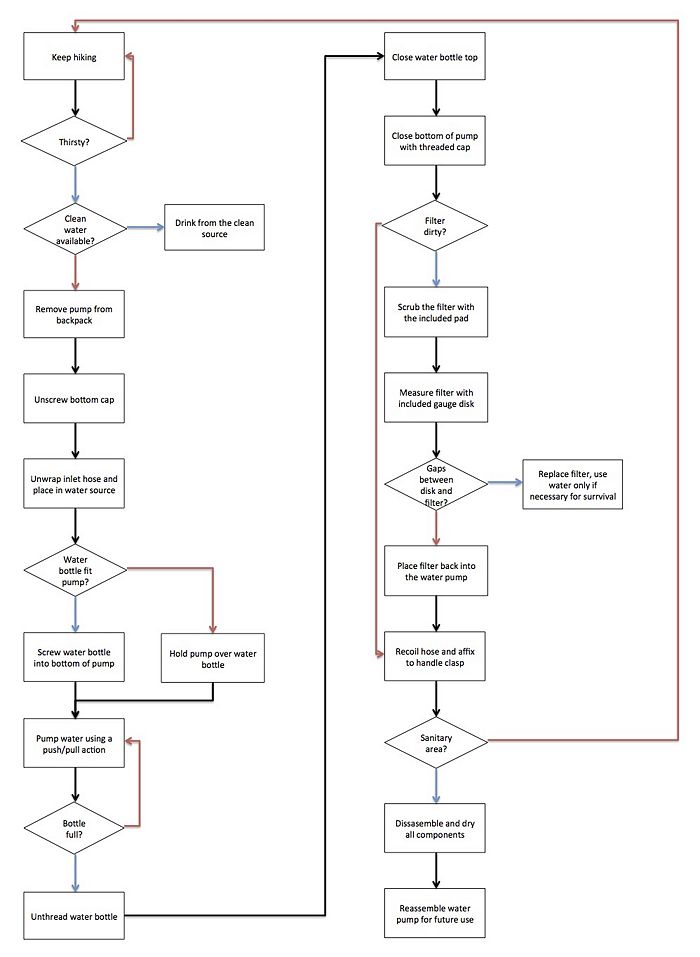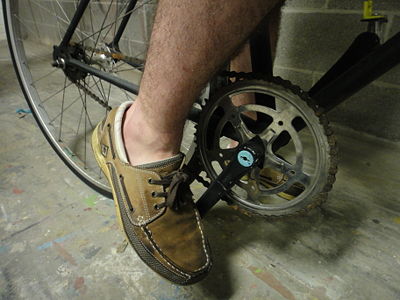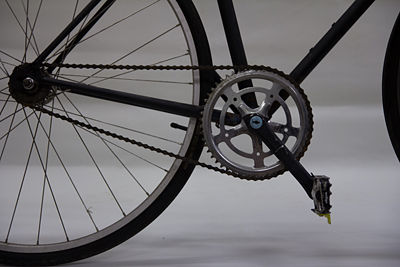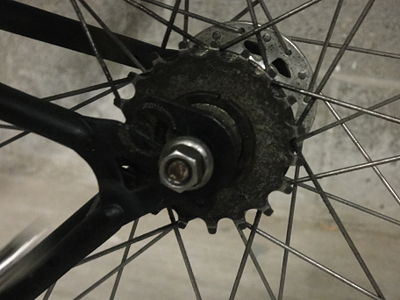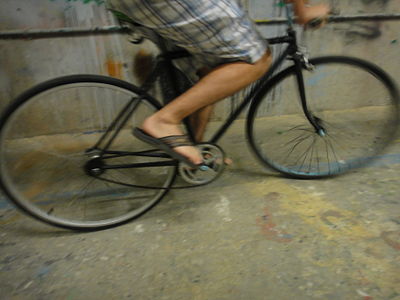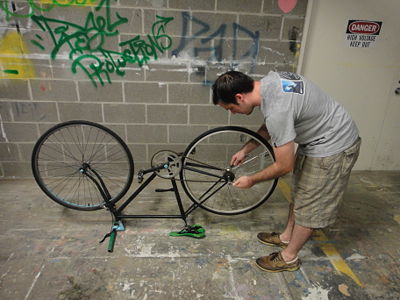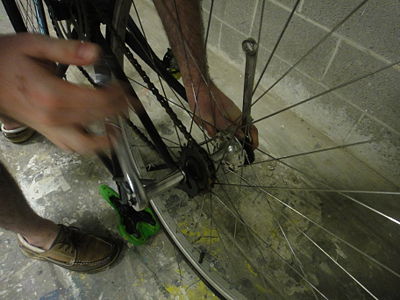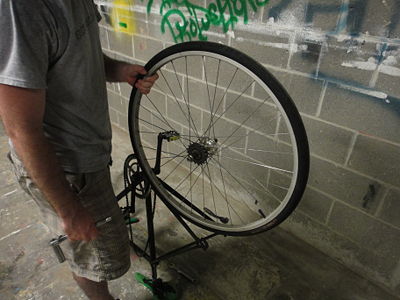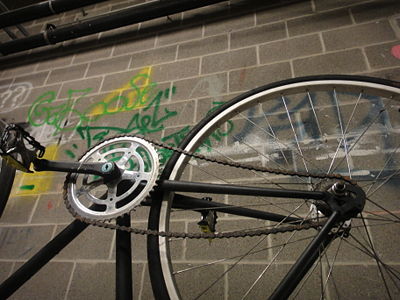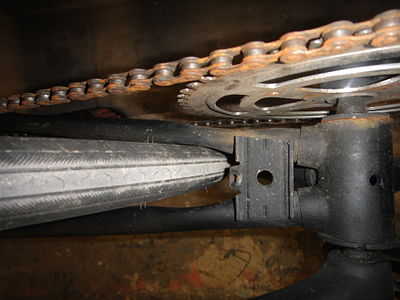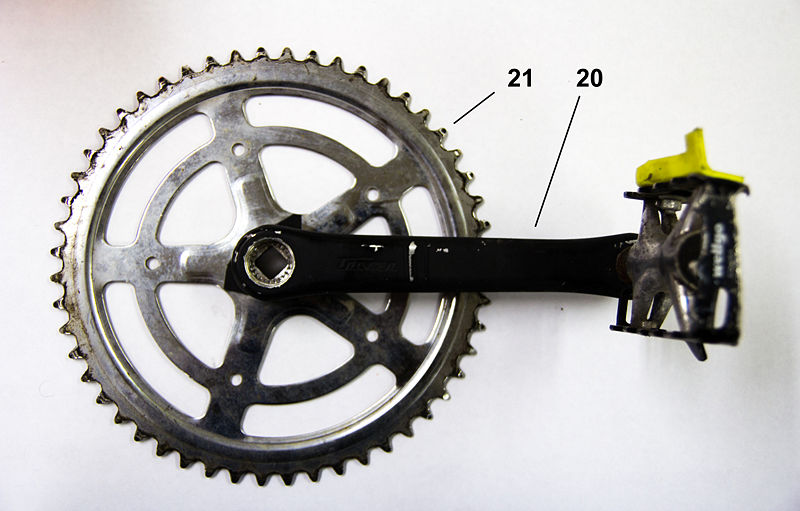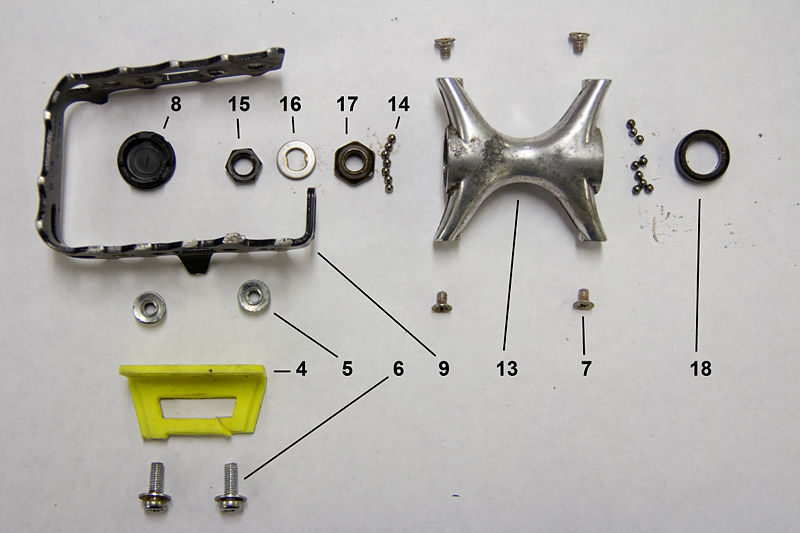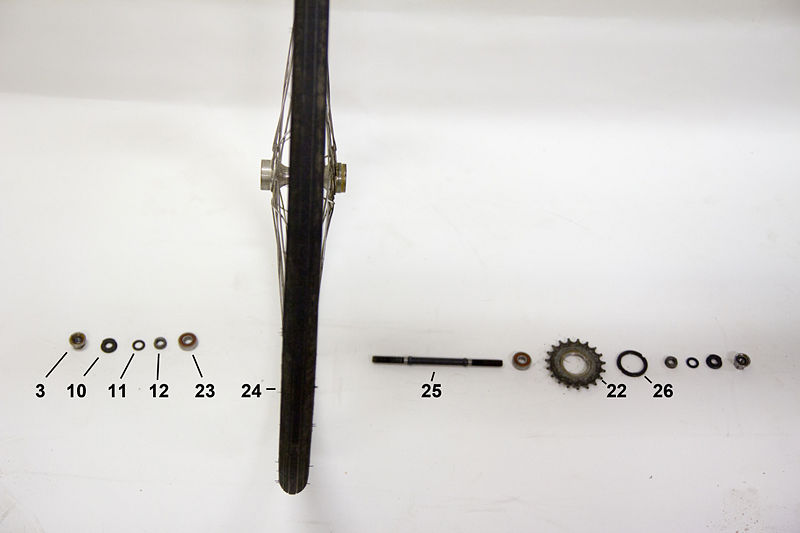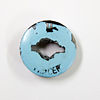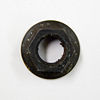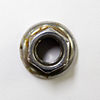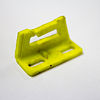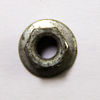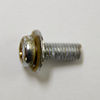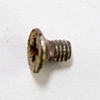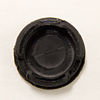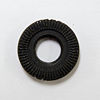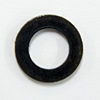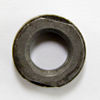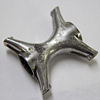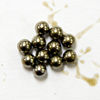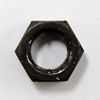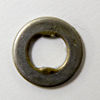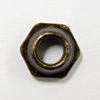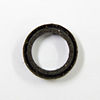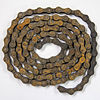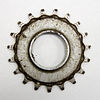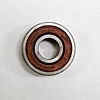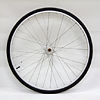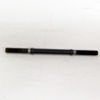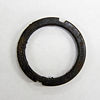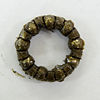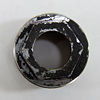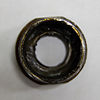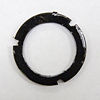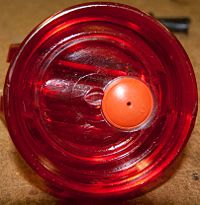Bicycle drivetrain
From DDL Wiki
Contents |
Executive Summary
To optimize the design of a chain tensioning device (be in powered by human power or an external source), the first step was to dissect the use of an existing application. A single, fixed-gear bicycle was acquired and dissected; areas of improvement were addressed via DFMA, FMEA and DFE.
Results from the product usage and evaluation study had proven that the system was not only incredibly non-intuitive, but required far too many specific tools to work on in an emergency situation. Though the subject was technically inclined, results from an attempt tot tighten the chain were incredibly poor and could easily result in injury. Even when this task was completed successfully, the tire was crooked, another opportunity for injury.
Results from the DFMA analysis... [BRIAN]
From the FMEA analysis... [ADAM]
From the DFE analysis... [ANNE]
Thus, the existing product was found to have quite a few issues. It is the goal of this team to improve the existing design as well as possible within the budgetary restrictions. Subsequent analysis will investigate these points further and determine possible design solutions.
Primary Stakeholders and Product Needs
The primary stakeholders in this supply chain are the Manufacturers, the bike shops who will retail this and the bike riding consumer.
Consumers:
Consumers are the target audience who purchases the product, these people would most likely own one or more single speed road bikes and may or may not be hipsters (but probably)
- Ease of use for both alignment and tensioning of the rear wheel
- Robust construction for reliable road use
- Low weight because this is a human powered vehicle
- Lowest possible cost for a quality product
- Ease of maintenance
- Compatible with many bike frame designs, IE not a custom part for each frame
- Easily installed on bikes not currently using it
- Weather resistance
Retailers:
These are the people and companies that would sell the product to the consumers
Most likely this would be from specialized bike shops (IE iron city bikes)
- Small size for easy storage
- Universal compatibility use so they do not have to stock more than a couple sized/configurations
- Ease of maintenance
- Low price
Manufacturers:
Manufacturers create the product for sale and effects on time and pricing impact the entire supply chain.
- Time to manufacture is important and all custom machined parts slow down the process
- Cost to manufacture and of materials; exotic materials would not be good here.
Product Function and Evaluation
The MSR MiniWorks Pump operates via an oscillating piston with two one-way valves. A duck valve is inline with the pump head and housing to prevent excessive pressure buildup in the housing. The entire product can be completely dismantled in-field, and can be maintained with little prior knowledge. The design seems very simple yet efficient in its purpose.
Usage
Find the cleanest possible source of water. The intake hose is unwound, and then the intake hose is inserted into the water source. Attach the pump to the water container. Pump water at a steady rate, until container is full. Pull the intake hose out of the water, and pump to clear pump of any additional water.
Mechanical Function
The product contains a lever that is attached to an oscillating piston with two check valves. On the intake stroke, the intake check valve allows water to travel through the water source into the piston. On the compression stroke, the intake check valve is closed and the bottom check valve allows water to be forced through the filter chamber. The filtered water is then sent out of the pump. A duck valve lies between the pump head and housing to prevent a buildup of pressure. If the input flow is greater than the outlet flow, then the spring on the duck valve will compress and pressure will be released.
Preliminary User Study
Our group conducted a preliminary user study and determined that the product was self explanatory for either experienced hikers or anyone with moderate technical know-how (i.e. CMU engineering majors). Our group was able to completely dismantle the product without the use of any tools and easily discern the purpose of each part. This product would only need to be purchased by someone with a lot of experience in hiking and the outdoors, as someone without this experience should not be taking trips during which they won't have access to drinkable water. Therefore, nobody should be using it without any prior knowledge.
There are many well-thought-out features which exhibit themselves through simple use. First off, the outlet of the pump is threaded the same size as a Nalgene bottle, so that the pump can sit directly on the bottle and there is no risk of contamination. The included cap for the outlet of the pump also serves to reduce contamination when not in use. The rubber hosing wraps around the pump housing and is secured by a small c clamp in the handle. This serves to not only hold the handle down when when not in use (and prevent incidental breaking), but the c-clamp is properly sized so that it squeezes the hosing closed to prevent excess contamination. Finally the handle is contoured to fit well with the averaged sized in a comfortable pumping position.
Not many issues arise when using the MSR water pump. The most notable problem lies in the fact that the pumping action is cramped and requires several minutes to fill a hiking-sized water bottle. If there were a way to reduce the pumping effort required while keeping the small footprint of the product, it would probably be very beneficial. The only other foreseeable issues are broken parts or a clogged filter, which we didn't encounter and couldn't simulate during this study.
List of Parts
The following details the list of parts of a fixed gear bicycle tensioner and drivetrain.
Parts list table
| Part Number | Name | Quantity | Mass (g) | Subassembly | Function | Material | Manufacturing Process/ Purchased Component | Image |
|---|---|---|---|---|---|---|---|---|
| 1 | Dustcaps | 2 | <1 | Crank Assembly | Keep dirt out of bottom bracket | Plastic | Injection Molding | |
| 2 | Lock nuts | 2 | 6 | Crank Assembly | Retainment/Assembly | Steel | Catalog Purchase | |
| 3 | Nut w/ integrated lock washer | 2 | 16 | Crank Assembly | Retainment/Assembly | Steel | Catalog Purchase | |
| 4 | Toe strap holders | 2 | 6 | Pedals | Ability to secure toe | Plastic | Injection Molding | |
| 5 | Flange nut | 4 | <1 | Pedals | Attach toe strap holder to foot grip | Steel | Catalog Purchase | |
| 6 | Screw w/ integrated washer | 4 | <1 | Pedals | Attach toe strap holder to foot grip | Steel | Catalog Purchase | |
| 7 | Screw | 8 | <1 | Pedals | Attach foot grip to pedal | Steel | Catalog Purchase | |
| 8 | Pedal cap | 2 | <1 | Pedals | Keep dirt out of pedals | Plastic | Injection Molding | |
| 9 | Foot grip | 2 | 27 | Pedals | Prevent foot from slipping off pedal | Aluminum | Die Casting | |
| 10 | Outer jam nut | 2 | 9 | Sprocket Assembly | Retainment/Assembly | Steel | Catalog Purchase | |
| 11 | Washer | 2 | <1 | Sprocket Assembly | Retainment/Assembly | Steel | Catalog Purchase | |
| 12 | Inner jam nut | 2 | 7 | Sprocket Assembly | Retainment/Assembly | Steel | Catalog Purchase | |
| 13 | Pedal | 2 | 54 | Pedals | Central Component in Pedals | Aluminum | Die Casting | |
| 14 | Ball bearings | 24 | <1 | Pedals | Friction Prevention | Steel | Catalog Purchase | |
| 15 | Nut | 2 | 3 | Pedals | Retainment/Assembly | Steel | Catalog Purchase | |
| 16 | Double D Washer | 2 | <1 | Pedals | Catalog Purchase | Steel | Catalog Purchase | |
| 17 | Nut w/ seat for ball bearings | 2 | 5 | Pedals | Retainment/Assembly | Steel | Catalog Purchase | |
| 18 | O-ring | 2 | <1 | Pedals | Keeping lubricants inside pedal | Rubber | Catalog Purchase | |
| 19 | Chain | 1 | 304 | Drivetrain | Drive rear sprocket using rotation of front sprocket | Steel | Stamping and Pressing | |
| 20 | Crank | 1 | 260 | Spindle/Crank Assembly | ? | Steel, aluminum | Die Casting | |
| 21 | Crank w/ sprocket | 1 | 626 | Spindle/Crank Assembly | ? | Steel | Assembly - Stamping and Die Casting | |
| 22 | Rear sprocket | 1 | 82 | Rear Hub Assembly | ? | Steel | Stamping with Post Machining | |
| 23 | Bearing | 2 | 19 | Rear Hub Assembly | ? | ? | Catalog Purchase | |
| 24 | Rear wheel | 1 | ? | Rear Hub Assembly | ? | Steel, Rubber, Aluminum | Assembly - Catalog Components Mated with a CNC lathed hub | |
| 25 | Rear axle | 1 | 101 | Rear Hub Assembly | ? | Steel | CNC Lathing | |
| 26 | Sprocket retaining ring | 1 | 15 | Rear Hub Assembly | ? | Steel | Catalog Purchase | |
| 27 | Ball bearings | 2 | 14 | Spindle/Crank Assembly | Countering Friction in Pedals | Steel | Catalog Purchase | |
| 28 | Left threaded cap | 1 | 54 | Spindle/Crank Assembly | Retainment/Assembly | Steel | Catalog Purchase | |
| 29 | Spindle | 1 | 209 | Spindle/Crank Assembly | Allow wheel to move | Steel | CNC Lathing | |
| 30 | Right threaded cap | 1 | 47 | Spindle/Crank Assembly | Retainment/Assembly | Steel | Catalog Purchase | |
| 31 | Crank Spacer | 1 | 47 | Spindle/Crank Assembly | Retainment/Assembly | Steel | Stamping |
Design For Manufacturing and Assembly
Design For Manufacturing [DFM] [BRIAN]
Dissection of the MSR Miniworks water filter shows clear attention to ease of manufacture and assembly by its designers. The majority of the product’s structure is made of relatively thick walled injection molded plastic components. The pump handle, piston, pump head, filter housing and clean side cover among many other pieces are injection molded before assembly. These parts are cheap and easy to manufacture but in the case of the Miniworks, may require very complex and expensive injection molding tooling. Some examples of complex molding on the Miniworks are the pump head and filter housing, which both require unscrewing devices or finishing operations to create internal threads, and the inlet hose barb which most likely requires a side action. Despite their complexity, these tools and processes are clearly well optimized and avoid unnecessary finishing operations (visible on the inner surface of the pump head) while creating very attractive components.
Overall, the material choice and construction clearly have manufacturability in mind. There are only 3 metal parts in the entire assembly (the inlet cage, relief valve spring and duckbill washer). All other parts aside from the ceramic and carbon filter elements are plastic, rubber or foam and extremely easy to produce on a large scale or purchase from another manufacturer in the case of O-rings and washers.
DFM Summary
- The Miniworks is designed with large volume production in mind.
- MSR has employed complex and expensive molding techniques in order to lower the overall part count and complexity of the device.
- MSR has gone to great lengths to optimize their injection molding design and efficiency, resulting in little waste in the manufacturing stage.
- The Miniworks is constructed mainly of cheap materials that are friendly to large volume production techniques.
Design for Assembly [DFA] [BRIAN]
Dissecting the Miniworks showed that its designers prioritized ease of assembly and disassembly by the user over assembly on the manufacturing line. A moderately experienced user is able to completely disassemble or reassemble the entire filter from individual components in a matter of minutes while causing minimal additional wear on its components. Since the components are designed for hand assembly, it is possible that more complicated assembly processes such as robotic arms or human labor are necessary or cost effective for final assembly in the factory. An example of this phenomenon is present in pump head pin and piston pin. These fasteners (the only two present in the product) may be more difficult for a machine to align and insert on an assembly line than cheaper, less durable snap-together components, and are consciously designed in such a manner to facilitate human assembly and longevity. These pins in the pump head and piston pivot are also most likely more expensive to produce than snap-together joints. MSR made this sacrifice in order to allow the Miniworks to be be disassembled and reassembled multiple times without its components degrading. This decision was most likely advantageous since this assembly and disassembly is part of the product's normal use. The designers of the Miniworks also prioritized ease of assembly over component simplicity, especially in the case of their injection molded components.
The designers of the Miniworks clearly believed that trading component simplicity for assembly simplicity would offset the additional initial tooling and process costs by increasing sales due to the filter’s ease of maintenance.
DFA Summary
- The designers of the Miniworks prioritized ease of user assembly and disassembly over assembly on the manufacturing line.
- User assembly and disassembly is part of the product's normal use and was wisely not ignored by MSR.
- This design decision may have slightly increased the assembly and part costs associated with manufacturing the product.
Failure Mode and Effect Analysis [FMEA] [ADAM]
Design for Environment [ANNE]
Team Members
Michael Ornstein - Team Leader
Rob Wojno - Product Function, Evaluation and Usage Study
Anne Dirkes - DFE
Brian Langone - DFMA
Adam Brecher - FMEA
Each member of the team expressed interest in their assigned field; work is done on a regular basis with Mr. Ornstein overlooking the direction and making sure it's in line with expectations.
References
Cascade Designs, Inc. MSR MiniWorks EX Water Filter. 24 Jan. 2012. Instruction Manual. Seattle, WA.
Carnegie Mellon University Green Design Institute. (2008) Economic Input-Output Life Cycle Assessment (EIO-LCA), US 1997 Industry Benchmark model [Internet], Available from:<http://www.eiolca.net> Accessed 23 September, 2012.
Dieter, George E., and Linda C. Schmidt. Engineering Design. 4th Edition. New York, NY: McGraw-Hill, 2009. 707-715. Print.
"MSR® MiniWorks™ EX Microfilter Schematic." MSR. Cascade Designs, Inc. Web. 12 Feb. 2012. <http://cascadedesigns.com/msr/water-treatment-and-hydration/expedition-water-treatment-and-hydration/miniworks-ex-microfilter/product>.
